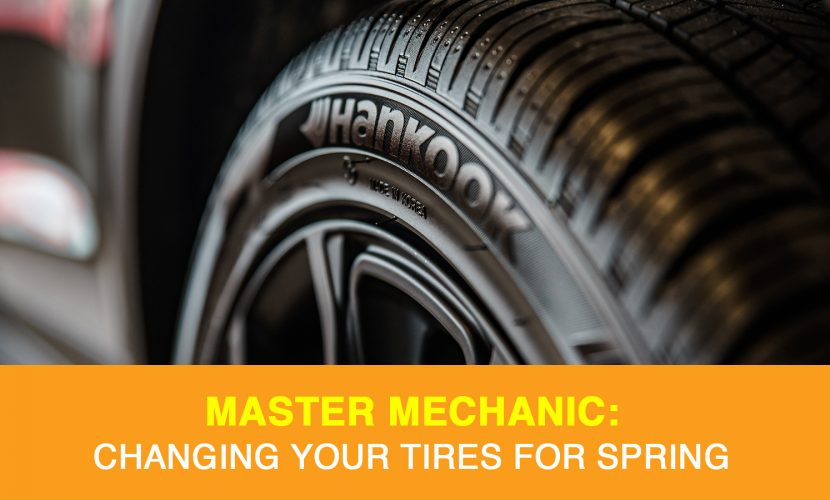
Master Mechanic: Changing Your Tires for Spring
At Master Mechanic, as Spring arrives, so does the “rush” to have car tires changed or swapped. While many drivers understand the importance of proper tires for each season, they may not know the right time to remove winter tires–or all the options they have.
Today, we’ll look at the difference between a tire changeover and swap, and why timing is essential when it comes to summer tires.
When to Change Your Tires for Spring?
While most Canadians use winter tires, most summer tires are branded as all-season tires. The name is misleading because these tires are only suitable in places that don’t get snowfall. For Canada’s harsh winters, all-seasons aren’t recommended or sufficient.
It’s best to remove your winter tires at the start of Spring–but you’re not necessarily going by the date. The first week that the temperature consistently stays above 7 degrees Celsius, it’s safe to take your winter tires off to store. Why is the temperature so important? The tread pattern and material on winter tires are designed for snow, ice, and to perform in cold temperatures. When temperatures rise during Spring, the tread and tires can get damaged as they make contact with the road.
Tire Changeover vs Swap?
You may have heard the terms tire changeover and tire swap and assumed they’re the same thing. They’re not!
You first need to determine if you have a set of winter tires on winter wheels or a set of winter tires on all-season wheels. An easy way to tell is if you have two sets of tires and wheels (rims), or two sets of tires and one set of wheels. Yes, investing in a separate set of winter wheels is more expensive at the onset but will save you money when it’s time to change to summer or all-season tires each year.
Since the tires already have their own set of wheels, a tire swap means removing and storing them together as one piece. A set of summer or all-season tires and rims are installed in their place, and off you go!
If you didn’t purchase separate wheels for your winter tires, a tire changeover is required. During a tire changeover, each winter tire is taken off the existing wheel (rim) and replaced with an all-season tire. A tire changeover typically takes longer than a swap, where each tire and wheel is removed as a single piece.
Now that we’ve covered the difference between a tire changeover and a tire swap, let’s look at a few things you should consider.
Inspect Your Tires
If your summer tires are stored at home, you should check the tread depths before installing them to make sure they’re ready for the summer season ahead. If you don’t have a tire tread gauge, your local Master Mechanic can also do this!
First and foremost, by law in Ontario, tires should not be older than ten years. Tires must also meet all standards described in the Canadian Motor Vehicle Safety Act. Older tires have reduced traction and are more susceptible to cracking or failing unexpectedly as you drive.
When Do Tires Need to Be Replaced?
You’ll want to replace your tires when the tread is less than 1.5mm deep or when the tread-wear indicators touch the road. For larger vehicles that weigh more than 4,500 kilograms, tires must be replaced when the front tire’s tread is less than 3mm deep.
You should also always replace tires that have tread/sidewall gashes, bulges, knots, exposed cords, or anything that compromises their safety. The easiest way to ensure your tires are in tip-top shape for Spring, is to schedule an appointment with your local Master Mechanic. Before we perform a tire changeover or swap, we’ll fully inspect your tires and discuss any necessary options with you.
Tire Balancing
Whether you need new tires, a swap or a changeover, your tires need to be inspected for proper balance and air pressure. A vehicle that has worn or loose parts cannot be aligned, and your Master Mechanic will inspect all parts before performing an alignment.
—
When the temperature starts to rise above 7 degrees Celsius, it’s time to think about your tires. While you should carefully weigh the benefits of new tires, a tire swap, or a tire changeover, keeping your winter tires on isn’t a cost-effective (or safe) option.
Have any other questions about your tires? Contact your local Master Mechanic to have your tires inspected, installed, and properly balanced for Spring!

